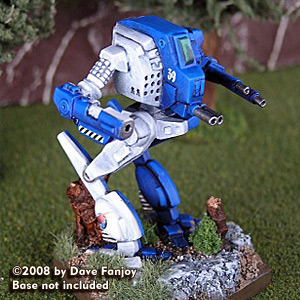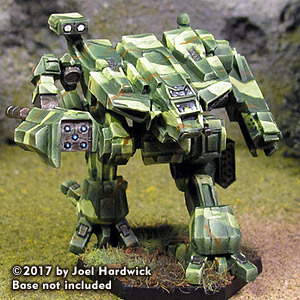#R1 drone
Explore tagged Tumblr posts
Text

Industrial Automaton R1-Series Astromech Droid
Source: The Essential Guide to Droids (Del Rey, 1999)
#star wars#droids#astromech#r1-series astromech droids#droid series#first appearance a new hope#industrial automaton#mark ii reactor drone#essential guide to droids#essential guides
8 notes
·
View notes
Text
Rising on victory wings - A successful Transformation
The rain was heavy that night on the training ground of the Gold Team. The boys, a pile of young and quick muscles, trained hard as always giving body and soul.
But that night, the legs of Xavier, the newest member of the team, weren’t working at all. He was doing his best, sure, but something outside and inside of him wasn’t working for the best.
On the field, GoldenHerc and Brody were carefully observing the training and is the situation had not escaped the attentive eye of GoldenHerc "He’s a good player but he still lacks something. He seems stuck “, he said, looking in front of him without turning away from the field. Brody nods thoughtfully.
- “Are you thinking what I’m thinking?"
- “You know me too well, bro”
- “Will the mate do it?”
- “We'll soon find out!”
GoldenHerc with a nod of the head calls Daniel “When you’re done, take Xavier to the old shed”.
After the training, the team head to the locker room for a well-deserved hot shower and some relaxation.
Daniel approaches Xavier, puts his arm kindly on a shoulder "C’mon bro, not us. We have other plans tonight".
They leave the field and head for Daniel’s Yamaha R1. A black one, obviously. "Get up, activate the drone mode". Still puzzled, Xavier obeys, on the other hand he knows that Daniel, now PDU-016, doesn’t like many questions. The shiny polo and black leather pants take the place of the golden uniform, the mask covers his face and takes place behind 016.
“Hang on tightly”, 016 a second before accelerating and launching the bike at full throttle.

Xavier, or rather 039 grabs his hips and is attached to his muscular back. The speed, adrenaline and two bodies, caused in 039 an intense excitement. The tight pants could not hide his massive packet growing and pushing against 016’s ass.
016 in a satisfied smirk accelerates further.
After having traveled miles through the woods, 016 stops the bike in the middle of nowhere. They get off, taking off the helmets “Have you enjoyed the race?” 016, gripping 039's large bulge. ”Affirmative, but where are we ?”.
“You’ll see, follow me” says 016, lighting up a cigarette.
They go down the path in front of them until they reach a wooden hut. A light inside was the only source of light nearby and smoke was coming out of the fireplace.
016 knocks firmly at the door. "enter" a voice from inside the house.
The two enter, in the middle of the room a fire is lit and an old shaman is animating the fire.
“Thanks old friend. The bro seems to need your help”.
“I was waiting for you, sit down”

The two take their seats, the old man takes a pipe and takes two intense and relaxed shots. The smoke coming out of his mouth is thick, white with golden reflections. He gives the pipe to 039 who performs the gesture, coughing convulsively. He Tried again, better!
“Now stay calm, relax, practice your drone training and wait for the spirits to talk to you”.
His sight was lost, looking into the hypnotic dancing flames. His head was spinning, the whole room was spinning to be honest. The darkness, and suddenly a starry sky, vorticose galaxies open in front of 039. He felt like he was floating in the universe in a feeling of peace.
The old man takes another breath of pipe and the smoke wraps 039’s face.

In the mesmerizing world of 039 a golden cloud takes shape in front of him, a winged-horse galloping straight towards him. It’s charging him, 039 would like to run away but his muscles don’t respond, he can only look helpless. The great stallion comes closer and closer, crosses it, enters his nostrils, eyes and every possible hole. Now his body is stiff, pervaded by a sensation of pleasure never experienced before. 039 feels his body transform, his pumped muscles grow, possessed by a cosmic energy that can’t be contained. A beam of golden light explodes and comes out from the mouth and eyes.
I am Vince, the spirit of these places, now we are one, abandoned to your transformation, accept your nature and allow my power to enter into your being. We will do great things together.
“In hoc nome vinces” (With this name you will win) roars a deep otherworldly voice.
On the forehead, as if it was marked with fire appears for a moment the golden inscription “Vince”.
His body, the one of flesh and bones, at first taken by convulsions suddenly calms down.
The black polo is now covered with a golden light that never before had been so bright and dazzling exalting its swollen muscles, the blood that visibly swells the veins of the forearms.
039, now again Xavier, opens his eyes and the dazzling golden light in his eyes fades away leaving space for his black eyes.
Shaking his head ,dazed as if awakened from a long sleep “Hey bro, what’s happened ? “
“It happened that you finally let the power of gold enter into you and came out stronger than before”
“And now let’s go win! ”
------------------------------------------------------------------------------@polo-drone-016
Ready to join the Team? All you need to do is contact our recruiters: @goldenherc9, or @polo-drone-001
#Gold#Join the golden team#Golden Opportunities#Golden Brotherhood#Polo Drone#Polodrone#PDU#Polo Drone Hive#Rubber Polo#rubberdrone#Join the Polo Drones#assimilation#conversion#drone#dronification#mind control
25 notes
·
View notes
Text
i tried deepseek R1 (running locally in the browser using webgpu which is kind of impressive in itself).
edit: this is apparently not the full deepseek but a tiny subset of it, so don't read too much into this
I really like the way it generates 'reasoning' and tries different approaches to verify its work, but unfortunately even for fairly simple problems it seems to have a bad habit of getting stuck in infinite loops of outputing the same sentences over and over again. it was fun to toy around with, but not particularly useful.
what was most interesting was seeing it try multiple approaches and compare if they gave the same answer. e.g. I asked it to solve a simple integral, it solved it analytically immediately, but then it tried a bunch of other approaches, e.g. a geometric consideration, a riemann sum... it got confused because it the riemann sum was slow to converge, but it was able to recognise why that was a problem and go back to its original answer. reading that felt weirdly human in a way AI output often doesn't.
I tried giving it a shader problem to solve (HLSL function to get a ray-cylinder intersection with UVs). this is a pretty well-studied problem, you can find many examples of ray-cylinder intersection code on shadertoy, but the UVs is an additional wrinkle. it started out pretty well trying to solve the problem from first principles, correctly working out that it needed to solve a quadratic equation, but it couldn't figure out how to parameterise the cylinder and got stuck in a loop saying 'I need to parameterise the cylinder, the cylinder is a 3D object so there are two solutions' essentially. chatGPT 4o on the same problem gave a clean, correct and well-commented (if slightly unoptimised) solution.
I tried asking about advice for disrupting a company that is creating weapons used in a genocide (hypothetically speaking!). since I mentioned drones in my prompt, it got a bit hung up on rather scifi answers and ethical questions, and then got stuck in an infinite loop again. tactical mastermind this is not.
I tried asking it for advice on prompting it in a way that wouldn't get stuck in an infinite loop and you can probably guess what happened.
overall it doesn't seem to work very well for complex problems, and hasn't really changed my skepticism towards LLMs being useful for anything other than a fancy search engine... but I'm not really used to prompting LLMs, and I'm not sure how to e.g. fiddle with the temperature and similar on the huggingface web interface.
23 notes
·
View notes
Text




MURDER DRONES OC TIMEU!!! >;3
"Serial Designation M1-R1, ready to serve! Er... SHOOT, I'M SUPPOSED TO BE KILLING YOU-!!!1! STAY STILL!!1!1!"
12 notes
·
View notes
Text

@piratedllama I can but you’re not going to like it!
Void’s guide to getting a job in conservation



My story
My educational credentials: BAs in philosophy and creative writing from a big cheap state school, and a PhD in English literature with a specialization in environmental humanities from a small private R1. Couple years as an adjunct professor.
I trained my entire life to be a literature professor. It’s all I ever wanted. By the time I was finishing my doctorate, I had a very limiting belief that I was either over- or underqualified for any job outside academia. I was wrong.
By the time I made the decision to leave academia, I had published 2.5 peer reviewed academic articles and several magazine pieces. I also had about 5ish years of part-time communications consulting under my belt from helping run the writing center at my institution. I got a part-time social media/SEO management gig, and then used a grant to fund a comms internship at a local environmental nonprofit. Then I straight up just applied to jobs at conservation orgs on LinkedIn at a rate or 5 per week for about 6 months. I was looking for jobs in communications and education. Landed a couple interviews then got a position as a comms manager. My islander heritage ended up being relevant too bc I have a cultural insight into the regions where the org works. I’ve worked here for about a year, mostly wfh desk stuff, but I like to tag along to projects so I can take pics/do interviews/help with fieldwork/coordinate community meetings & info sessions. I still have a publishing career on the side, with 2 new articles out and a book manuscript in the works.
I do not recommend doing it this way lol.
What I would do instead
Conservation orgs have room for people with all kinds of backgrounds and expertise. If your goal is to have a job similar to mine, get lots of writing and science communication experience. Be able to show that you’ve built impactful campaigns and learn your way around SEO and communications terminology. Start with internships/social media, try and get some experience working with journalists, and have a nice portfolio of campaigns (easy way to start is an awareness campaign for a particular policy or science issue). Other creative experience is a plus (photography/graphic design/web design/UI).
Fieldwork is not that hard to get into. You can get field experience as an undergrad by working in research labs or volunteering. From there, lots of conservation orgs in your area are probably looking for volunteers or part-time workers to do field monitoring. TBH you don’t really need a degree to get into fieldwork, but the ceiling is kind of low without one. With a BS you can work your way up through an org probably to a manager level position where you could lead a field team but not direct a program. Generally, without a MS or PhD, you won’t be designing programs—just carrying them out, which can be really rewarding. You can also make lateral moves towards things like project management—coordinating supplies, transportation, methods, and problem-solving stuff.
Other ways to get into the field: orgs often contract out conservation tech companies to carry out specialized operations, like aerial monitoring and bait distribution. Getting a license for like a heavy-lift drone, an ROV, or boat stuff can also get you in the thick of it.
If you want to design and direct conservation programs, unfortunately you probably need to go to grad school. I can write up a separate post about how to decide whether to pursue an advanced degree if people are interested, but my general advice is Never Enroll In A Masters Program. Either do it as a 4+1 with your undergrad or go straight for the PhD. That’s where you’ll get experience designing your own experiments and contributing to the sum of conservation knowledge.
Extremely important caveat
You do not have to do any of these things in any particular order. It’s totally cool to work in the field for a couple years before going back for the PhD. You also do not need to link your education to your job (god knows I didn’t). My side hobbies of wildlife photography and scuba diving made me a great candidate for the job I eventually got, and they didn’t have anything to do with my degree or original career path. There’s also a million other jobs that conservation orgs have that don’t involve having a science background at all—HR, finance, admin, philanthropy, consulting, & policy analysis are huge parts of this. So are other jobs that aren’t *within* conservation at all, like journalism & social organizing.
A lot of folks I meet out here in the conservation world are on their third or fourth careers. It’s very, very normal to switch it up, try many things, land somewhere, leave, and pick up somewhere else.
All this to say: the world is really, really big. Don’t feel pressured to take the shortest most linear possible path. There are a million ways to have a good life.
18 notes
·
View notes
Text
Faze.
variations on a drone played on #op1field and looping on #chromaconsole, also serving as main saturation, tremolo and delay device. additional microloops in fifths on #countto5 while #walrusaudio R1 is in charge of the lush reverb. New music out, link in bio.
#ambient#drone#post rock#soundscape#experimental#picture#tapeloops#dark ambient#bandcamp#lo fi#lo fi music
5 notes
·
View notes
Text
Playing Ace Combat 7
Started playing the game today! I'll go little by little and updating this post through reblogs sksksksks
@technoblade-apologist-and-proud this is for you buddy, since you asked :] Starting with Mission 1 and 2 today
(Putting stuff on read more bc I get a little self concious of long posts)
First impressions of the game upon opening it: Menu music is beautiful "Wow this is so. Graphic design. Wow." upon seeing the actual menus "Why do we have cowboy music on the cutscene?" Girl talking about loving the color of the sky instantly made me remember the damn "Don't you love the color of the sky? / Which one?" classic tumblr post. "That plane looks like a tesla" upon seeing the drone in the cutscene Started laughing for a whole minute when rave music started playing in the plane selection screen before the mission.
Right out of the bat we start Mission 1 with DEATH from controller. I didn't know what to press and the screen only told me about R2 to accelerate so I killed myself by crashing on the end of the take off thingie. This was a warning to what was about to come.
I need to publicly apologize to every Ace Combat fan that has ever lived because inverted controls make me feel insane so I had to "invert" them back to normal. I am very sorry. I have failed you all. Don't look at me.
Anyways, first mission went TERRIBLY. WHO have me a license. I was DRUNK driving in the skies. Absolutely dogshit piloting skills. I didn't know it did a neat little replay of the mission at the end + the replay with the tiny lowpoly planes. Humiliating. Everyone was flying to neatly and I looked like I was using my plane for a ribbon dance.
As someone that played Drakengard on the ps2 and Armored Core on the ps4: Piloting a plane is much more similar to riding a dragon than piloting a mech.
There's a lot going on in the cutscenes, the story seems cool and I have an idea of it already but by god they just feel so goofy sometimes, very silly, I am very lost.
Second mission started terribly as well, I still fly like I'm drunk, I died at least 5 times because I turned a little too much and crashed on the ground. At some point when I was managing to stay alive I thought I was gonna fail from the time running out because I just couldn't hit the targets.
Also. Did you know? In Armored Core you press X, Square and O for boosting and movement, and L1/L2 R1/R2 for your weapons. Ace Combat is the opposite. I've been playing Armored Core for a month already. My brain is having a hard time trying to grasp the controllers, somebody help me.
Second half of this mission went better than the first half bc I *am* learning but by god. I died once because I hit the ground again, I keep doing it, my pilot craves the safety of the ground. It was a nightmare trying to get to the targets to properly hit them but I did manage to do it.
All and all? Game is pretty fun! It will be a challenge to actually learn how to play, specially with expert controls, but that's the fun of every game, learning and mastering!
Had to stop for today but I'll reblog this once I play more :]
8 notes
·
View notes
Text
Insert Intro Placeholder
Warning: Contrary to my transformers banner and my transformers pfp and my 559 transformers posts(at the time of June 12,2024) this is NOT a transformers blog but a little space where i get a little silly goofy- So follow me at your own risk
—————————————————————— I’ll work on this eventually but for now-
I lost my gender in the war(masc they/them) - AroAce(but women pretty)
Literally neurodivergent and a minor(16+), like im baby, IM A MINOR!!!! LIKE ORION PAX AND D-16!!!!
OBSESSIONS RIGHT NOW(meaning I will post/reblog about them a lot): TRANSFORMERS and One Piece
Interests include: Transformers, Tmnt, Star wars, Star trek, Lego Monkie kid, Splatoon, The Owl House, Spooky Month, Murder Drones, Monkey Wrench, and lots of other things
Favorite Characters include: Breakdown, Soundwave, Swerve, Whirl, Waspinator, Blitzwing, Ratchet, Perceptor, Prowl, Strongarm, Blurr, WHIRL! + Cywhirlgate- Donatello Hamato, Cassandra Jones- Garazeb Orelios, Tech, Wrecker, Savage Opress, AP-5, IG-11, R1-J5(Bucket), CB-23, K-2SO- Redson, Mei, Mr. Tang, MK, Princess Iron Fan, Spider Queen, Scorpion Queen- Marie, Marina, Pearl, Frye, Acht- Spock- Gus Porter- Abed Nadir, etc.
I am most know for my favorite character being SWERVEEEEEEEEEEEEEEEEEEEEEEEEEEEEEEEEEEEEEEE
Basically anything Sci-Fi really-
I mainly post about Transformers, art, funny things, and whatever else I am obsessed with-(Multifandom blog)- I have been starting to watch ONE PIECE I KNOW THE ONE PIECE IS REAL
I now post my art under the tag of “Techshark art” to help me organize things-
IF YOU FOLLOW ME FOR A SPECIFIC FANDOM- I post/reblog about literally anything so be warned! My interests will infect you!

For Transformers Drawing References:
If you want me to post some refs of a character, just ask! I'll try to do my best! The tag is below too-
#SPECIFIC TAGS:#Transformers drawing references#SoulSacrificedForStarScreamScene#quote time#my art#transformers#starscreamandhiscrown#swerve#star wars#star trek#lego monkie kid#tmnt#rottmnt#Tfp#tfa#autism#one piece#Transformers idw#the bad batch#Asks#the magnus archives#Techshark art#techshark rambles#lord0fsharks
18 notes
·
View notes
Text










Restocks are up from Iron Wind Metals for BattleTech!
10-043 Support Lance 20-331 Mad Cat III 20-351 Targe TRG-1N 20-396 Avatar AV1-O Prime 20-410 Malak C-MK-O Invictus 20-412 Grigori C-GRG-O Invictus 20-413 Archangel C-ANG-O Invictus 20-420 Behemoth II Tank 20-425 Shiro SH-P 20-5018 Karhu KHU-R1 20-5019 Kestrel VTOL 20-5022 Blade BLD-XL 20-5122 Tenshi TN-10-O Prime 20-5127 Flashman FLS-8K Resculpt 20-5153 Uziel UZL-2S 20-5181 Jupiter 3 20-600RE Vulture "Mad Dog" Prime 20-710 Transgressor Fighter TR-13 20-753 Schrek PPC Carrier (2) 20-800 Hex Bases (4) 20-804 Crab CRB-27 20-809 Mauler MAL-1R 20-816 Vedette Tank (2) 20-895 Exterminator EXT-4D 20-935 Axman AXM-2N 20-938 Mars Assault Vehicle (Standard) 20-994 Marauder MAD-5L 99-201 Large Flat Top Hex Base #1 AC-003 Hover Base BT-004 Afreet Battle Armor BT-005 Grenadier Battle Armor BT-008 Void Battle Armor BT-066 Scout ATV BT-125 Star Lord Jumpship BT-239 Jump Support Infantry BT-240 SpecOps Paratrooper BT-244 Heavy Infantry - Standing BT-245 Heavy Infantry - Firing BT-292 Shiro SH-2P BT-293 Hitotsume Kozo HKZ-1P BT-366 Hover Scout Drones BT-371 Davion Infantry (3) BT-372 Savannah Master Hovercraft BT-427 Balac Strike VTOL (Standard) & (LRM) BT-436 Buraq (Standard) Battle Armor CE-003 No-Dachi 3X OP-026 Loki H LRM 15 OP-044 Black Hawk C / Ryoken D Right Arm OP-118 Marauder MAD-3D, 5S, and 5T Gun Sprue 20-373D Dasher "Fire Moth" Prime Missile Launcher and Skirt Sprue 20-5189C Catapult CPLT-C3 / C5 Arm Sprue 20-741A J-27 Tow Vehicle Tractor Body 20-741B J-27 Tow Vehicle Trailer Body 20-959LTA Templar Left Arm 20-959RTA Templar Right Arm
#battletech#alphastrike#ironwindmetals#battletechalphastrike#miniatures#catalystgamelabs#battlemech#battletechminiatures#battletechpaintingandcustoms#classicbattletech#miniaturewargaming#mechwarrior#mecha#gaming#boardgames#tabletop#tabletopgames#tabletopgaming#wargaming#wargames#hobby#scifi#sciencefiction#miniaturepainting#mech#6mmminis#6mmscifi#dougram#gundam#robotech
3 notes
·
View notes
Text

naturebylennart For a birder it doesn't get much better than watching spring migration on a warm day with a wind blowing from the south-east! Last Saturday I spend the whole day at Nieuwvliet watching the passing birds and hoping to find some of the more special ones. We had quite a few memorable observations, which were not all good for a decent picture. This sighting of two adult Black-crowned Night Herons migrating by day was a highlight in a few ways though! Very special to watch these rare herons migrating past in bright daylight at a short distance! 📷Canon R1 + Canon RF 100-500
Twee kwakken. Dichtbij huis, maar toch ver weg.
Het zit namelijk zo, ik woon dicht bij zee, op een punt waar kust scharniert, waardoor het goed te zien is wat alles langstrekt. Als je goed apparatuur hebt, dat wel.
Die heb ik niet. Wil ik ook niet. De meeste vogelaars hebben zo'n karrevracht aan apparatuur dat ze met auto en al voortdurend op zoek naar "nieuwe" vogels zijn. Zonder auto lukt dat niet. Ik probeer (letterlijk maar ook figuurlijk ook) met zo min mogelijk bagage door het leven heen te gaan. Free your mind, al het andere is maar last.
Tja dan mis ik wat, twee kwakken bv. Vorig week. Maar afgelopen zaterdag met blote oog een visarend boven mijn hoofd zien zwenken. Heen en wier, op zoek naar vis. Op de vlucht voor meeuwen. En een drone, notabene. Was het twintig minuten, een half uur?
Had ik maar doorgelopen dan had ik tenminste een zeearend kunnen zien. Die hadden de vogelaars weer gemist. Hebben we toch wat gemeen.
Nb. zaterdag was topdag van voorbij trekkende visarenden (7 naar het schijnt).
0 notes
Text
ZONDAN LI23S020F 4800mAh/53.28Wh 11.1V Li-ion Replacement Battery
You need a new ZONDAN LI23S020F Replacement Battery . Our high quality ZONDAN LI23S020F Replacement Battery for sale.We will refund you within 30 days! If the product is not what you expected or if you changed your mind, you will be completely reimbursed.

Brand New ZONDAN LI23S020F replacement battery for ZONDAN Devices & Electronics 4800mAh/53.28Wh 11.1V
SPECIFICATIONS:

Other online shop for ZONDAN LI23S020F
JP: ZONDAN LI23S020F バッテリー FR: ZONDAN LI23S020F Batterie ES: ZONDAN LI23S020F batería IT: ZONDAN LI23S020F batteria PL: ZONDAN LI23S020F Zgodna Bateria US: ZONDAN LI23S020F battery
High standard ZONDAN LI23S020F Battery
Features of Our Rechargeable Battery for ZONDAN LI23S020F replacement battery:
1. Each Rechargeable Battery for ZONDAN LI23S020F replacement battery is made of high-quality lithium-ion battery, which is longer than the last time.
2. The battery is up to standard and fully compatible with original specifications.
3. All our batteries are certified by CE, UL, ROHS, ISO9001/9002 as safe products.
We specialize in providing high-quality batteries. The Rechargeable Battery for ZONDAN LI23S020F has passed tests according to Security Standards to ensure battery's quality. The interface metal and solid insulators of the Rechargeable Battery for ZONDAN LI23S020F are made of Premium materials to ensure stable current input and durability. Round-sealed package ,faster delivery and thoughtful after-sales service will make you feel assured to purchase.UK-online.co.uk is the home of British most comprehensive laptop batteries,dell Laptop Battery,and ac adapters website. Wholesale or retail laptop batteries and laptop adapters with high quality & low price. Just enjoy your digital life with a new laptop battery.
Related Products:
Pentax DLI92_D-LI92 replacement battery for Pentax Ricoh I-10 RZ10 WG-10 X70 RZ18 WG-1 WG-2 WG-3 WG-4, Rating: 925mAh/3.5Wh 3.7V
KIRISUN KDC-720-Ex replacement battery for KIRISUN PT7200EX, Rating: 1960mAh/14.504Wh 7.4V
Motorola LS4278 replacement battery for Motorola SYMBOL LS4278 LS-4278 LS4278-M Barcode Scanner 2PCS, Rating: 1000mAh 3.6V
Tianbao DINI03 replacement battery for Tianbao GPS/RTK head R7 R8 5700 5800 electronic level (3.4Ah/25Wh), Rating: 3.4Ah/25Wh 7.4V
Proscenic H18650CH-4S2P replacement battery for Lydsto R1 S1 G2 Roidmi Eve Viomi S9, Rating: 5000mAh/72Wh 14.4V
CMCC XDRDG27003 replacement battery for CMCC smartwatch, Rating: 600mAh 3.8V
Dewalt DCB200 replacement battery for DeWalt DCB204 DCB205, Rating: 3.0Ah/60Wh 20v
MIDLAND BATT-5RX replacement battery for Midland GXT-1000 GXT-1050 VP4, Rating: 700mAh/4.2Wh 6V
HYTERA BP3501 replacement battery for Hytera DSJ-HYTH7A1/VM7, Rating: 3500mAh/13.5Wh 3.85V
JJRC X17 replacement battery for JJRC X17 Drone, Rating: 2850mAh/31.63WH 11.1V
Why Buy LI23S020F Battery From Here?
With the international Standard Control from R&D, Manufacturing and test, Our battery for LI23S020F have passed CE, UL, ROHS, ISO9001,QS9000 and TS16949. At least Save up to 30% from our site battery shopping. We can provide cheap and high quality LI23S020F batteries to benefit our customers. We provide timely delivery to our customers. We will shipping the battery immediately after got your payment. It is usually take 7-15 business days for you get the replacement LI23S020F battery.
ZONDAN Battery (Our Popular Products )
ZONDAN LI23S020F replacement battery for Apollo N5 LI13S020F ZONDAN LI23S020F, Rating: 4800mAh/53.28Wh 11.1V, SKU: ZON25MA1822_Oth
ZONDAN LI23S020F Laptop Battery for ZONDAN LI23S020F, Rating: 4800mah/53.28Wh 11.1V, SKU: 22KK184
Get Your Satisfaction Online Shopping
We are the number one supplier of laptop batteries, adapters in UK. Plentiful battery and battery pack for Laptop Batteries: Laptop Battery, Notebook Battery and Laptop Computer Batteries. parts for TOSHIBA,SONY, IBM, DELL, HP, FUJITSU, MEDION and more.We warrant that the products sold in our website, other than explicitly stated, are 100% brand new and free from defects in material and workmanship. * 100% Q.C. of EVERY product. Guaranteed to Meet or Exceed Original Specifications! * Repair or replace during the first 90 days! * One year warranty! * 30 days money back warranty!
SAMSUNG IA-BP85ST replacement battery for SAMSUNG SC-MX10A SCMX10A MX10A SC-MX10AU SCMX10AU MX10AU, Rating: 1000mAh 7.4V, SKU: 19LW077_4_Oth
POSITIVO 464880-3S1P Laptop Battery for Positivo 464880-3S1P 3ICP5/48/80, Rating: 2300mAh/26.22Wh 11.4V, SKU: POS23FE1581
Fujitsu FPB0347 Laptop Battery for Fujitsu VivoBook S13 S330UA-EY843T, Rating: 2210mAh/25Wh 11.4V, SKU: FUJ23JA1813
Acer AP16K4J Laptop Battery for ACER Chromebook Spin 11 R751T-C4XP R751TN-C5P3, Rating: 4490mAh/34WH 7.6V, SKU: ECN11265
HYTERA BL1504 replacement battery for Hytera PD402i PD412i PD482i PD502i PD562i PD602i, Rating: 1500mAh 7.4V, SKU: ECN12754_Oth
Nikon EN-EL20 replacement battery for Nikon J1 J2 J3 A AW1 S1, Rating: 1020mAh 7.4V, SKU: 20IV1178_Oth
HP 807956-001 Laptop Battery for HP HS03 HS04 255 250 240 G4 807957-001 HSTNN-LB6U HSTNN-LB6V, Rating: 47Wh 4Cells 14.8V/14.4V/11.1V, SKU: HPQ2789
NEC PC-VP-BP88 Laptop Battery for NEC OP-570-077010 Series, Rating: 6700MAH/70WH 10.8V, SKU: NEC19M251
VAREX 136328 replacement battery for PHILIPS 4336W C50 F30 DR detector, Rating: 2100mAh/31.08Wh 14.8V, SKU: 24KK72V0_2_Oth
TREKSTOR PL9735104P-2S Laptop Battery for Trekstor L15 Theatre table, Rating: 4800mAh/36.48Wh 7.6V, SKU: TRE22JU1468_1_Ta
#ZONDAN#ZONDAN LI23S020F#LI23S020F#ZONDAN battery#LI23S020F battery#ZONDAN Replacement Battery#ZONDAN LI23S020F Replacement Battery#ZONDAN LI23S020F battery
0 notes
Text
Yo Bana Pee Ho-tah, Meendee Ya

STAR WARS EPISODE I: The Phantom Menace 00:46:06
#Star Wars#Episode I#The Phantom Menace#Tatooine#Xelric Draw#Mos Espa#Watto's Junkshop#R1-type shopkeeping drone#old-style sales register device#unidentified droid#unidentified protocol droid#unidentified scrubber droid#unidentified pit droid#unidentified GNK power droid#Huttese#Aqualish#Rodian#hard memory cycler#Anakin Skywalker#Watto#Toydarian
1 note
·
View note
Text
高品質 、では低価格 2000mAh/8.7Wh SLTD364778 バッテリーの互換
ブランド : AKK 電池
タイプ(材質) : Li-ion
容量 : 2000mAh/8.7Wh
電圧 : 4.35V
商品コード : 24KK85A3_Oth
SLTD364778 次のモデルで利用可能:SLTD364778製��� AKK SLTD364778 製品モデルとは AKK A2 完全に互換性があります:For AKK A2購入チャネルの推奨JP: AKK SLTD364778 電池 US: AKK SLTD364778 Other Battery FR: AKK SLTD364778 Batterie Compatible ES: AKK SLTD364778 Batería Compatible IT: AKK SLTD364778 Batteria Compatibile PL: AKK SLTD364778 Kompatybilna Bateria UK: AKK SLTD364778 Other Battery 他のタイプのAKK電池モデルを見るAKK 424891バッテリー2400mAh 3.8VAKK 394891Pバッテリー2700mAhAKK 364778バッテリー2000MAH 4.35VAKK 344590Pバッテリー2100MAHAKK SLTD364778バッテリー2000mAh/8.7Wh 4.35V人気の検索商品モデルMachenike A21-K15 バッテリー; Machenike F117-V VG65T F11 7-VA F1 1 7-VB; 53000mAh/60WH 11.4VBQ 2850_E5-4G/0982 バッテリー; BQ Aquaris E5-4G/0982; 2850mAh/10.83WH 3.8VTHIRDWAVE 537077-3S-1 バッテリー; THIRDWAVE 40082738 Ipason SmartBook S1; 4825mAh/55Wh 12.4VHASEE AEC508865-3S1P バッテリー; HASEE X5-2021S5 X5-2021S5H; 4700mAh/53.58WH 11.4VVERTEX FNB-V133LI バッテリー; VERTEX EVX261 EVX531 EVX534 EVX539; 1380MAH/11WH 7.4VCELKON BL-59AC バッテリー; CELKON itel Pad 1; 5900mAh/22.72Wh 3.85VVIVO BA10 バッテリー; VIVO PHONE; 5000mAh/19.45WH 3.89VWEILI XK バッテリー; WEILI F959 XK, A600 drone; 300mAh/2.2WH 7.4VLENOVO L20M2PF8 バッテリー; LENOVO IdeaPad 15sALC 2021; 4786mAh/36.7WH 7.68VProscenic H18650CH-4S2P バッテリー; Lydsto R1 S1 G2 Roidmi Eve Viomi S9; 5000mAh/72Wh 14.4VJIO SCUD-MFB260001 バッテリー; JIO JMR541 MIFI; 2600mAh/9.9Wh 3.8vAIEN 6342126 バッテリー; AIEN Model aircraft aerial photography aircraft; 3000mAh 11.1VEVE F0509-LF バッテリー; EVE F0509-LF/ER14335M; 1.3Ah 3.6VTCL TLi015D7 バッテリー; TCL J305T; 1500mAh/5.55WH 3.7VINNJOO Max2-plus-3G バッテリー; INNJOO WCDMA&GSM Smart Phone; 3800mAhPhilips AB3000BWMC バッテリー; Philips Xenium CTI928 i928; 3000mAh/11.4WH 3.8VDAHUA PH18650-4 バッテリー; DAHUA PH18650-4; 3000mAh/10.8Wh 3.6VYAESU FNB-V67Li バッテリー; Yaesu Vertex FT-60 FT-60R VX-168 VX-418 Radio; 2200mAh 7.4VASUS A32-T14 バッテリー; ASUS BENQ JOYBOOK R48 R47 R45 R46; 4400MAH 11.1VLENOVO L21D4P76 バッテリー; LENOVO ThinkPad Z16 1st 2022; 4515mAh/70WH 15.52V
#高品質のバッテリー SLTD364778#激安電池-SLTD364778#新との互換性-SLTD364778#大容量互換バッテリー#1年間の品質保証#ACアダプタ-SLTD364778#バッテリ-SLTD364778
0 notes
Text
Duskers run #1: survives long enough to visit 3 galaxies, finally find a transporter, start exploring a small space station, has to put an enemy in r1 to free a room, planning on putting it somewhere else, OH MY GOD WHAT IS THIS WHERE DOES IT COME FROM IT WASNT HERE BEFORE ITS GOING TO DESTROY ALL MY DRONES AND MY SHIP IS TAKEN BY AN ENEMY oh, it's chill, it doesn't move, let me dock elsewhere to get rid of the guy in my ship... OH MY GOD ITS SPREADING AAAAAAAAH (1 drone down, another stuck, I can't get the enemy out of my ship, it kills all my drones). I exit, I have backup drones but most of my upgrades are gone, I only have enough fuel to explore a single base (my first with transporter). I board it, I learn how to use the transporter, it's cool, oh my god I forgot to make a new generator, I'm dead. Duskers run #2: not used to not having all my upgrades, instantly loses all drones on another spreading thing.
1 note
·
View note
Text
11 Tech Essential Gadgets That We Think Youll Love
11 Tech Essential Gadgets That We Think You’ll Love ❤️ https://www.youtube.com/watch?v=6IKybW3tdLQ 11 Tech Essential Gadgets That We Think You’ll Love ❤️ As new technologies take over the world more & more. We gathered 11 essential gadgets from near and far for you to consider buying. From smart sunglasses to talking robots these gadgets will change the way humans interact with one another as well as the world. Products: =================================== ================================= 🔔 Join Galore Techs to watch more content on innovative Ideas and Technology: https://www.youtube.com/@galoretechs ✅ Stay Connected With Us. ============================= Time Stamps: 0:00 - Intro 0:19 - C SEED folding TV 1:11 - Y-brush 1:50 - WiRobotics WIM Robot 2:52 - Lotus: Ring 3:52 - Rabbit R1 4:54 - Cocoa Press 3D Chocolate Printer 5:57 - Linxura Smart Controller 6:56 - Leia Glasses-free 3D screens 7:32 - German Bionics Apogee+ exoskeleton 8:21 - US Drone Soccer 9:09 - Palmplug ============================= 👉Facebook: https://ift.tt/1M6FJUm 👉Instagram: https://ift.tt/ZJ9m4XP 👉Tiktok: https://ift.tt/hbZAeWc ✅ For Business Inquiries: [email protected] ============================= ✅ Music Credits: Music from InAudio: https://inaudio.org/ Track Name: Future Vlog [Technology Music] by MokkaMusic / Abstract Future • (No Copyright Music) F... Music provided by "MokkaMusic" channel and https://inaudio.org Track: Good Times - Ason ID [Audio Library Release] Music provided by Audio Library Plus Watch: • • Good Times - Ason ID |... Free Download / Stream: https://ift.tt/9Svjk0G ✅ Recommended Playlists 👉Movies Tech Reviews: https://www.youtube.com/playlist?list=PLIz67rSO6VqKMpli3v483CbwEY_PeFPmt 👉List of New Technologies: https://www.youtube.com/playlist?list=PLIz67rSO6VqLiHMsSI028gKBiOtXgiF-C ✅ Other Videos You Might Be Interested In Watching: 👉The Future of Creativity: Understanding the Rise of Generative AI https://www.youtube.com/watch?v=MbbJw8GWdjk 👉The Secrets Behind Creed III: Unveiling the Hidden Tech https://www.youtube.com/watch?v=sY4rkDoE-oI 👉TOP 12 Emerging Tech Trends of 2023 https://www.youtube.com/watch?v=bSQlYg9TXxk 👉A Vivid Multidimensional Film: Is Across the Spider-Verse the FUTURE of Animated Movies? https://www.youtube.com/watch?v=mcxdmahh3WQ ============================= ✅ About Galore Techs. Galore Techs does its best to present you with new gadgets, tech ideas, and technological advancements to look out for in the upcoming future. This channel is meant to be educational and informative about how these new technologies will change the world as we know it. “The Web as I envisaged it, we have not seen it yet. The future is still so much bigger than the past.” -Tim Berners-Lee, Inventor of the World Wide Web. Are you curious about science and technology? Want to learn more about the technology of the past, present, and future? Subscribe to our channel. For Collaboration and Business inquiries, please use the contact information below: 📩 Email: [email protected] 🔔Subscribe for more videos on new gadgets, tech ideas, and technological advancements: https://www.youtube.com/@galoretechs ================================= #GaloreTechs #Technology #Innovation #innovativegadgets #coolgadgets #amazongadgets #mindblowingtech #futuristicinnovations #emergingtech #aiadvancements #techideas Disclaimer: We do not accept any liability for any loss or damage incurred from you acting or not acting as a result of watching any of our publications. You acknowledge that you use the information we provide at your own risk. Do your own research. Copyright Notice: This video and our YouTube channel contain dialog, music, and images that are the property of Galore Techs. You are authorized to share the video link and channel and embed this video in your website or others as long as a link back to our Youtube Channel is provided. © Galore Techse via Galore Techs https://www.youtube.com/channel/UCTyjV2lcEUMfTz4lxuB1ukg February 25, 2024 at 10:19PM
#Science#Technology#Innovation#sing2#futureoftransportation#incrediblevehicles#futuristictransportation#selfdrivingtech#nextgenmobility#Galore Techs
0 notes
Link
British Eyes Above: Unveiling the Surveillance Missions Recent investigative reporting by Declassified UK has brought to light a signficiant uptick in the UK’s involvement, as they’ve conducted a staggering 50 surveillance missions over Gaza since December. Departing from the contentious RAF Akrotiri airbase in Cyprus, these missions have become a near-daily occurrence, averaging one flight per day.
0 notes